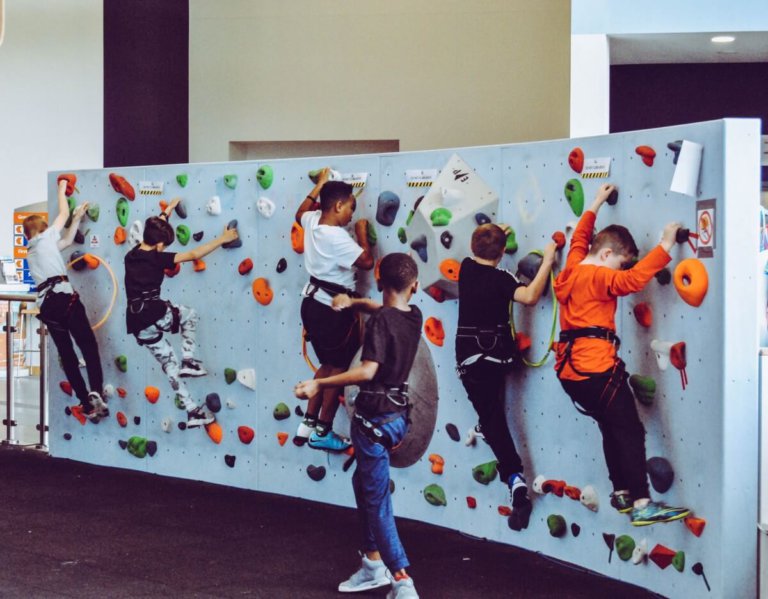
Torn between their screens and a chance to play sports outside, schoolchildren in the US may be neglecting their social and emotional (SEL) development by opting for mind-numbing games online and a continuous reel of cartoons.
According to the recent The Common Sense Census: Media Use by Tweens and Teens 2019 report, more than half of US children now own a smartphone by the age of 11, while American teenagers are currently spending seven hours, 22 minutes per day on average with screen media, not counting schoolwork or homework.
With so much time spent distracted by tech, is there any time left for these schoolchildren and teenagers to work on their SEL progress?

Physical education promotes teamwork, critical thinking and social skills. Source: Jeffrey F Lin/ Unsplash
Why is social and emotional learning so important?
According to the Harvard Graduate School of Education, SEL relates to the development of a vast range of non-academic skills that are increasingly considered essential to student success.
“It describes efforts to support students’ capacity to direct their thoughts, feelings, and actions in ways that help them succeed, but it gets applied to everything from bullying prevention in high school to self-control in preschool,” they note.
From the perspective of the Collaborative for Academic, Social, and Emotional Learning or CASEL, there are five core competencies that relate to social and emotional learning.
As CASEL outlines, they are:
Self-awareness: Know your strengths and limitations, with a well-grounded sense of confidence, optimism, and a “growth mindset.”
Self-management: Effectively manage stress, control impulses, and motivate yourself to set and achieve goals.
Social awareness: Understand the perspectives of others and empathize with them, including those from diverse backgrounds and cultures.
Relationship skills: Communicate clearly, listen well, cooperate with others, resist inappropriate social pressure, negotiate conflict constructively, and seek and offer help when needed.
Responsible decision-making: Make constructive choices about personal behavior and social interactions based on ethical standards, safety and social norms.
Five essential components that contribute to a well-rounded and balanced student, it’s easy to see why educators are concerned about SEL being neglected in schools and the distraction that digital tools provide to pupils.
Celebrating School Psychology Awareness Week with our very own Focus Fair @shawaveschool! Students learned how to focus their attention during mindfulness exercises, minute to win it games, affirming their personal strengths and exploring cool down tools/strategies. #SPAW2019 pic.twitter.com/88BTmcw6J4
— Francyne Zeltser (@doctorzeltser) November 14, 2019
Attempting to alter this digital dilemma and to heighten SEL in schools, the Society of Health and Physical Educators (SHAPE) recently released some positive data that could counteract the fears of SEL neglect.
Encouraging social and emotional learning in physical education (PE), National Board Certified Teacher Kyle Bragg told SHAPE that, “Teaching SEL through health and physical education helps students navigate many of the challenges they face each day. It promotes academic achievement and positive social behaviour, while reducing conduct problems, substance abuse and emotional distress.”
Learning from experience, Kyle has been using the free Crosswalk for SHAPE America National Standards and CASEL SEL Core Competencies document, which embeds SEL competencies into the SHAPE America National Standards and Grade-Level Outcomes for K12 Physical Education.
“For example, one grade-level outcome for third grade is ‘Describe the positive social interactions that come when engaged with others in physical activity’ (S5.E4.3). To meet this, I created a partner ‘copycat’ activity where one student led an exercise/dance while the other copied, then switched roles.
“The activity ended with a partner discussion. As I walked around with my rubric, I listened as students shared how much fun they had because they were able to be creative, express themselves using their own funny faces, and socially interact. They felt important when they were the leader (voice/choice),” Kyle elucidates.
Demonstrating how teachers can embed SEL practices into their PE lessons, the free document from SHAPE and the advice from Kyle shows how it is possible to blend the two together, and with minor changes to the lesson plan or lesson environment, the five-core competencies can also be intertwined.
Adopting SEL in physical education can also lead to a change in activity style.
For instance, integrating mindfulness classes or the practice of yoga.
By injecting alternative PE activities that are related to stress-reducing results and SEL-enhancing experiences, schoolchildren may begin to put their screens away and their online gaming habits on hold.
Liked this? Then you’ll love…
Quiz: Test your knowledge on Special Educational Needs (SEN)







